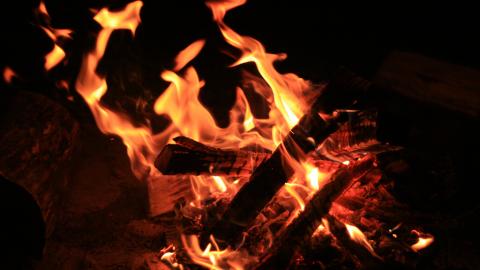Difficult Pastor-Church Partings and Fire Alarms
1 comment
887 views

"Hard" or "conflicted" partings of ways between pastors and congregations have been steeply on the rise. Statistics from a Christian Reformed Church (CRC) database tracking ministers bear this out. One strong indicator of this trend is found in the number of Church Order (CO) Article 17 separations. In the years between 2000 and 2009 there were 135 of them on the record. The decade before that, 1990 to 1999, about 40 were registered; and between 1980 and 1989, only 23. The first decade in our entire history where there is a significant number,1970-79, there were 12. Between 2010 and December 2014, there were another 75, making it likely we will reach 150 in the current decade between 2010 and 2019. I've attached two graphs below depicting these statistics. The data has not been carefully scrutinized, but it is unquestionable indicative of a trend towards more "Fires."
There are various reasons for this rise in difficult separations and I want to start exploring them in a general way. It feels important, and even urgent, that we begin to understand this trend, this symptom of a problem in the body, and maybe that exploration will lead to correctives.
I very deliberately say "explore this in a general way" because this is a subject with a lot of pain and trauma behind the numbers. The stats are simply a numerical depiction of the potential for much congregational pain and puzzlement, and pastor and family trauma. If you want to correspond with me about 'your story' you can find my email and contact me that way. Our stories are very important, but this is not the place for us to be too specific. Yet it is the stories that give me the information, ideas, and theories I hope to share here in this discussion and in a separate blog.
As a Specialized Transitional Minister (STM), I am often part of what you could think of as a cleanup and restoration crew after such a "hard" parting has occurred. We often come in after there has been a "fire" of some sort. It is not all we do, we could be the equivalent of various kinds of coaches, but we more often arrive on the scene when there is a pile of ashes after a "firing." We do what we can to help with fire damage repair and restoration. I am playing with the word "fire" deliberately, not to call each situation the firing of a pastor, but because that analogy helps me think about solutions.
Decades ago, when house fires were on the increase, someone had the idea of creating a detector that looked for key indicators of fire being present, in order to raise an alarm when there was danger. I wonder if we can devise something similar for churches. So the question that's smoldering (yes, that was on purpose) in the back of my mind is: Are there measurable pre-indicators of a potential "fire" in a congregation?
Pastors, Church Coaching
Pastors, Church Coaching
Church Coaching
Church Renewal, Church Coaching
Connect to The Network and add your own question, blog, resource, or job.
Add Your Post
Comments
Further note: I plan to take any comments and combine them with my own thoughts and post a compilation in about a month.
Let's Discuss
We love your comments! Thank you for helping us uphold the Community Guidelines to make this an encouraging and respectful community for everyone.